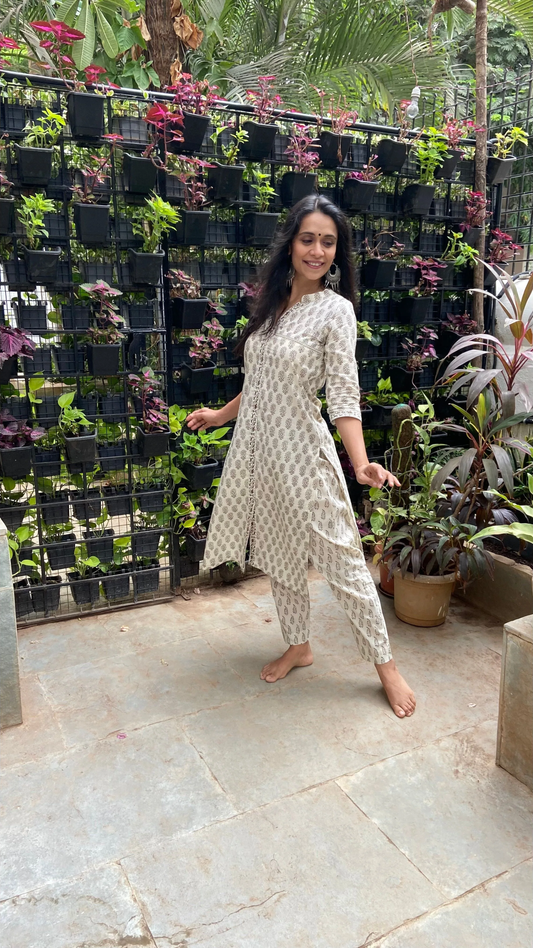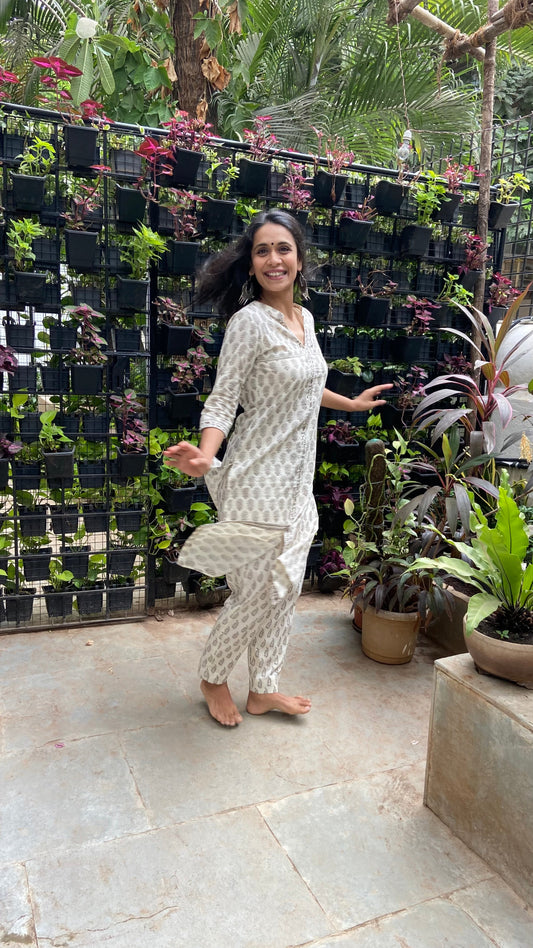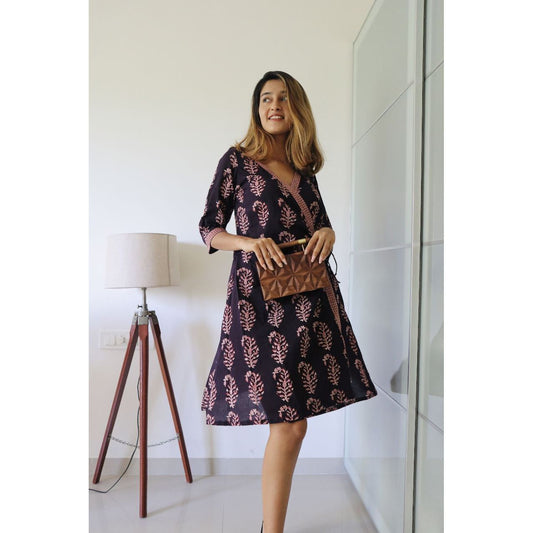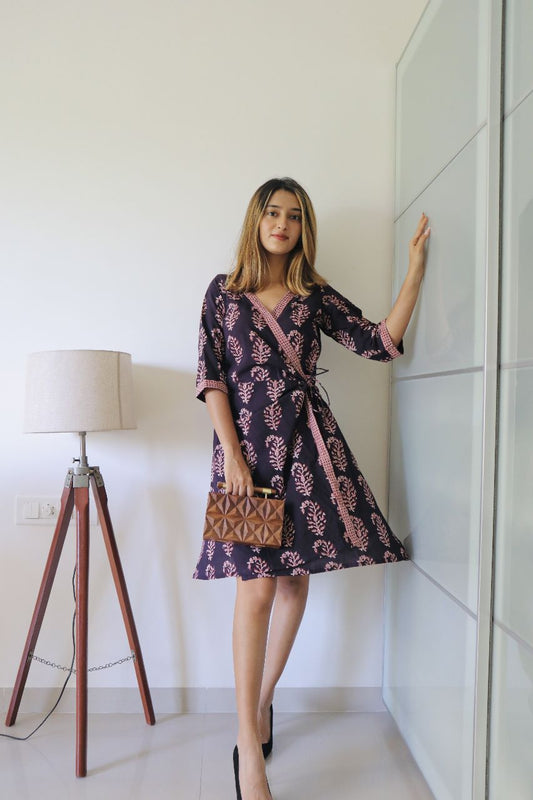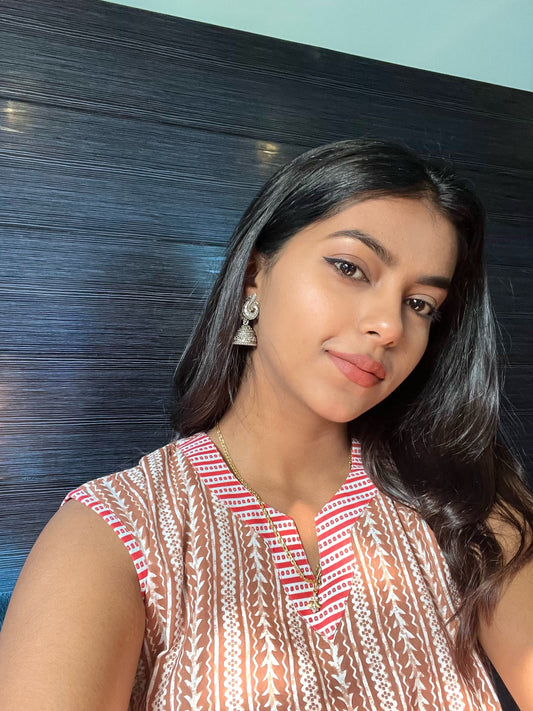Discover the Beauty and Rich Culture of Ajrakh: Where Indigo Meets Tradition.
Consistently a global sensation, the 4000-year old Ajrakh craftsmanship can still be seen practised in Sindh and Kutch even today. Several relics related to Ajrakh have been found in the excavated remains from the Indus valley civilizations- Harappa and Mohenjo-Daro. One of the oldest continuous forms of printing native to the sub-continent of India, the circular designs and trefoils patterns along with the double sided block printing, popularly known as AJRAKH work is carried out in a traditional way with natural dyes till date.
Ajrak is a block-printed textile that is resist-dyed using natural dyes, incorporating indigo and madder. This artform is mainly distinguished by its notable color palette - blue with red besides its complex geometric & floral patterns. History did justice to Ajrakh deriving its root from the Sanskrit work ‘A-jharat’ which means ‘That which does not fade’. The extensive use of indigo could have also played its part in the etymology according to the Arabic definition.

This craft work precisely falls under the Meraki category for us because the craftsperson puts in his/her soul and love in completing the product to perfection. The entire process is unhinged; including approximately 14 to 16 different stages of dyeing as well as printing. This course takes upto 14-21 days to finish. The resulting cloth is soft against the skin and jewel-like in appearance, pleasing to touch & appealing to the eye. We do not realise the amount of hard work that is involved in the creation of such an aesthetic line of clothing but we definitely need to appreciate it.
A beautiful yet unobtrusive theory about Ajrakh is that it is said to signify the Universe; with the colour red stored in for earth, white for clouds, black for darkness and blue for the Universe itself. The exquisiteness of the manufacturing process lies in the fact that nature plays an equally important role in its making. The craftsmen work in total harmony with their environment, where the sun, river, animals, trees and mud are all part of its production.
Stretching furthermore on the manufacturing of Ajrakh products, it has been deduced to be printed only with two techniques: ekpuri (single-sided) and bipuri (double-sided). As already discussed traditional Ajrakh involves various stages of dyeing using natural mordants, with resist and some colours (especially indigo and madder) printed on cloth using carved wooden blocks with intricate symmetrical patterns.

It is a long drawn process with Saaj being the primary stage with cotton cloth being taken and washed to mostly remove the starch by soaking it overnight in camel-dung, soda ash plus castor oil. It is then followed by drying in the Sun and soaking it again, repeating the entire string of work 7-8 times. The next step is Kasano, where the cloth is washed in Myrobalan which acts as the first mordant in the dyeing stage, the excess of which is brushed off after dyeing.
Following this is the Khariyanu step where a resist of lime is used for whitewashing and the Babool tree resin is printed onto the cloth to outline (known as Rekh) the white design motifs. The Kat step involves mixing and boiling of ferrous water with tamarind seed powder, turning it into a paste (known as Kat) to further use for black printing. The next resist printing stage is known as Gach after which the cloth is left to dry naturally for 3-4 days.

Indigo dyeing is then done in the sun twice to ensure a uniform colour. Vichharnu incorporates thorough washing of the cloth to remove residual resist print and is followed by the final stage, Rang.
The craftsmanship is so particular in nature that it doesn’t allow an ounce of complaint in its texture or comfort. The various types of long-lasting Ajrakh namely Do Rangi, Teli, and Kori swipes the Indian markets off its feet because of the extensive, classy needlework that the modern designs lack.
It does not only rock the ethnic apparels but is famously printed on skirts and pants for women and turbans for men as well. The ageless art of Ajrakh is purposefully in demand in the international markets too. A lot of Tollywood and Bollywood stars like Tara Sutaria are choosing Ajrakh gears to look confident and proper. This block print textile craft, gliding through all these years smoothly is incessantly in demand these days, never once losing its soul.
Vasiliki makes trends meet sustainability with AJRAKH.



